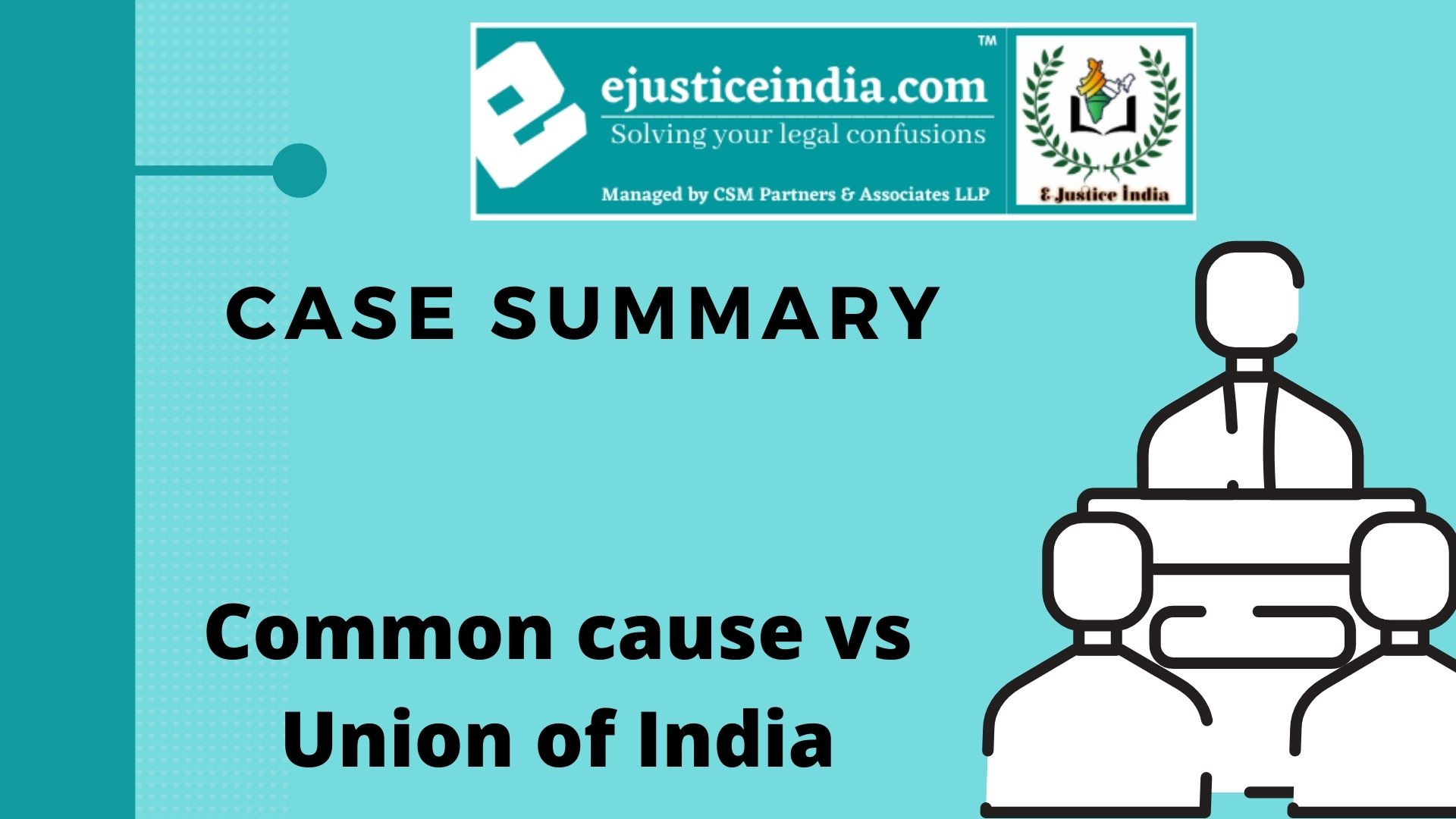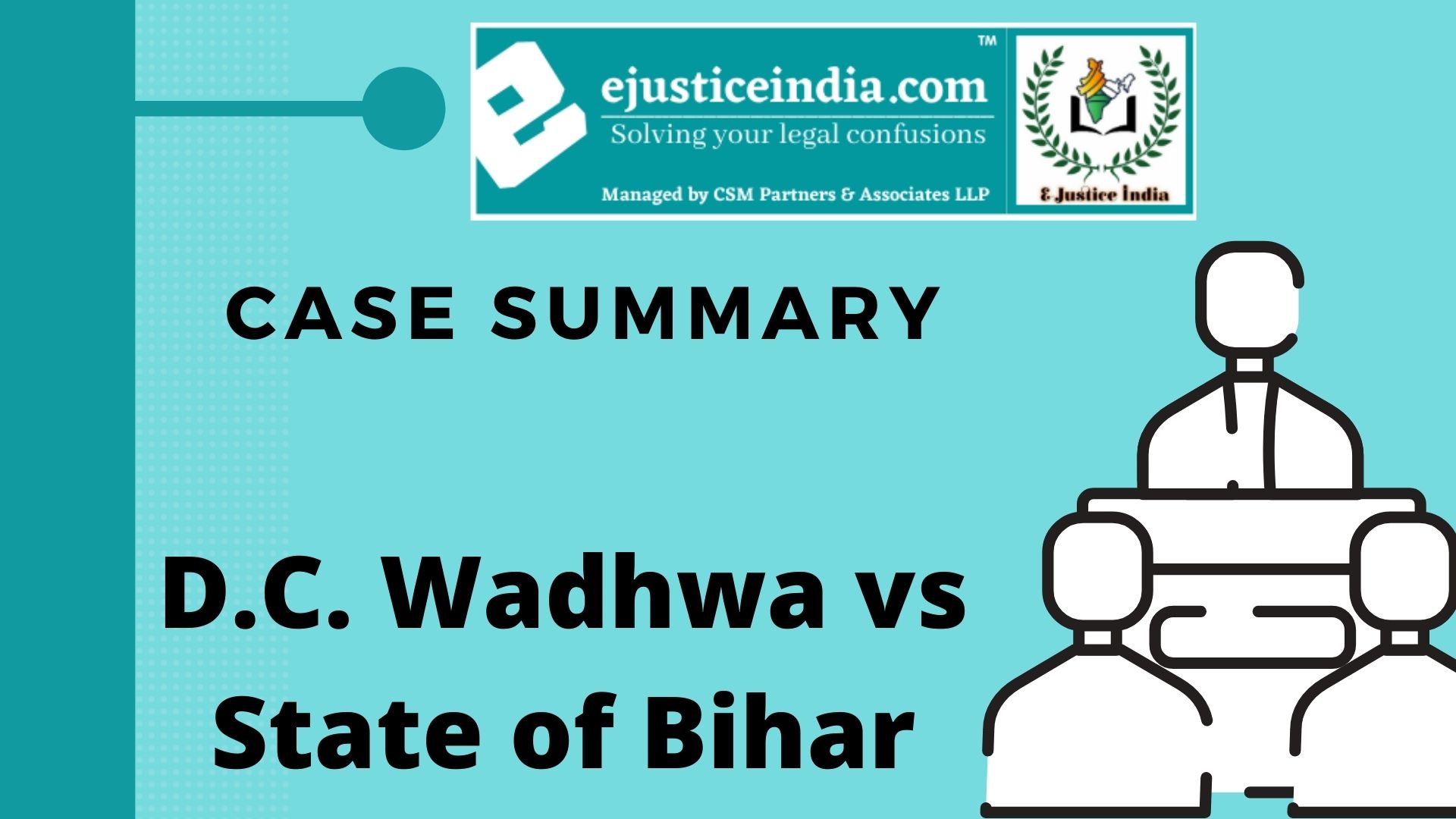Case Summary : Ammini and Ors. v. State of Kerala
Ammini and Ors. v State of Kerala
Case Summary
Author : Ishita Arora
Citation: (1998) 2 SCC 301
Bench: Justice G.T. Nanavati and Justice M.J. Rao
Introduction
In the case of Ammini and Ors. v State of Kerala, an appeal has been filed by the appellant against the order of the conviction by the high court for a criminal conspiracy to murder a person and her children.
The Supreme Court in this case held that where there is reasonable ground to prove that two or more person have conspired together to commit any offence, anything said, done or written by any one of such person regarding their common intention, after the point when such intention was first shown by any one of them, then it can be believed that every person was involved in the conspiracy.
Facts of the case
Tomy and his brother Francis were doing business in partnership. Besides Tomy and Francis, Merli, (deceased) and Josephine were the other partners. After the death of Francis, Ammini was made a partner in the two firms; but, she was not made a partner in the third firm as Francis had overdrawn his share in the capital of the firm.
Ammini was periodically paid amounts by Tomy for maintenance of herself and her children, but she was not satisfied with this.
Ammini and Kartikeyan (A2), who was her neighbour, were in illicit intimacy. Tomy got to know about this and told her that what she was doing was improper.
A1 suspected that Tomy’s wife Merli had informed Tomy about her illicit relationship with A2.
As a result of this incident the hatred of A1 towards Tomy and his wife became more intense. A1, A2 and Johny (A3), whose mother was the maid servant of A1, decided to do away with Tomy and his family members.
After several failed attempts, A1, A2 and A4 then decided to use cyanide which is a powerful poison. Then, the appellant forcibly put cyanide in her Merli’s mouth. The poison had its effect and Merli died immediately.
Then, they gave cyanide to Merli’s two children. They also died instantaneously. When Tomy came and saw what had happened he informed the Police about the incident.
The High Court after examining the case declared the accused guilty. Hence, the present appeal is filed against the decision of the High Court.
Issues and facts of law
1. Whether the appellant can be convicted for the offences punishable under section 120B and Section 201, 302, 452 all read with Sections 34, 109 and 11 of IPC?
Judgement
The appeal was dismissed as the evidence concerning the movements of A1, A3 and A4 around the murder time near Tomy’s house, the finding of finger prints of A3 on one glass seized from Tomy’s house and the confession of A4 along with other evidences prove the guilt of the accused beyond reasonable doubt.
Also, the Supreme Court held that the confession of A4 can be used against the other appellants. Hence, the Supreme Court upheld the decision of the high court of imprisonment for life.



Like!! Really appreciate you sharing this blog post.Really thank you! Keep writing.